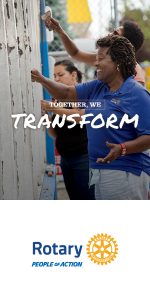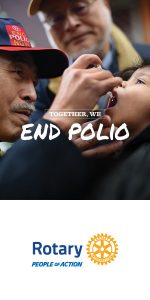Rotary Zones 33/34 encompasses a vibrant network of clubs dedicated to making a difference. Our Zones are supported by various types of coordinators, each specializing in key areas such as Public Image, Membership, and The Rotary Foundation, to guide and enhance club and district efforts. To amplify this impact, three distinct yet interconnected roles—Public Image, Public Relations, and Communication Officers—play a vital part. Understanding the unique responsibilities of each is essential for fostering collaboration and achieving Rotary’s mission.
Public Image Coordinator
The Public Image (PI) role focuses on shaping and maintaining Rotary’s brand identity. Public Image Coordinators ensure that all Rotary materials and activities reflect the organization’s core values and professional standards. This role emphasizes:
-
- Brand Consistency: Implementing Rotary’s official branding guidelines across all platforms, including logos, fonts, colors, and messaging.
- Storytelling: Highlighting impactful projects and initiatives that resonate with diverse audiences.
- Engagement: Inspiring members and the public to embrace Rotary’s mission through visually appealing and emotionally compelling content.
- Training: Providing resources and workshops to help clubs and districts enhance their public image efforts.
Public Relations Officer
Public Relations Officers focus on building and maintaining Rotary’s reputation within the community and beyond. Their role include:
-
- Media Relations: Establishing relationships with local media to promote Rotary events and initiatives.
- Press Releases: Writing and distributing press releases about key Rotary activities and achievements.
- Crisis Communication: Managing communication during challenging situations to protect Rotary’s image.
- Community Engagement: Representing Rotary at community events and fostering partnerships with local organizations.
Communication Officer
The Communication Officer’s role is centered on the internal and external dissemination of information within the Rotary community. This role ensures that all stakeholders—from members to partner organizations—are well-informed and engaged. Core duties include:
-
- Internal Communication: Keeping members informed through newsletters, emails, and club bulletins.
- External Communication: Managing Rotary’s social media channels, website, and other digital platforms.
- Content Development: Crafting compelling messages that align with Rotary’s goals and values.
- Feedback Channels: Establishing mechanisms for members and the public to provide feedback and ask questions.
How These Roles Collaborate
While each role has distinct responsibilities, collaboration is key to maximizing impact:
-
- Public Image provides the overarching framework and branding guidelines.
- Public Relations creates and leverages opportunities to engage with external audiences.
- Communication Officers ensure that messages are effectively conveyed across all channels.
Together, these roles create a seamless strategy to promote Rotary’s mission, celebrate its successes, and attract new members and partners.
Importance at the District and Club Levels
At the district and club levels, these roles are equally critical:
-
- District Level:
Coordinators and officers at this level provide guidance and resources to ensure consistency across multiple clubs. They offer training, develop district-wide campaigns, and support clubs in achieving greater visibility and engagement. - Club Level:
Club-level officers bring the strategy to life by tailoring it to local communities. They work closely with members to highlight specific projects, events, and initiatives, ensuring Rotary’s message resonates on a personal level.
- District Level:
When these roles are effectively implemented at both levels, they create a unified and powerful voice for Rotary, strengthening its impact and reach.
Empowering Your Club
By clearly defining these roles and fostering collaboration, Rotary clubs can:
-
- Enhance Rotary’s visibility.
- Strengthen connections with local communities.
- Attract and retain members who are passionate about service.
Understanding the distinct and complementary roles of Public Image, Public Relations, and Communication Officers is a crucial step toward amplifying Rotary’s message and ensuring its continued success in making a difference worldwide.





